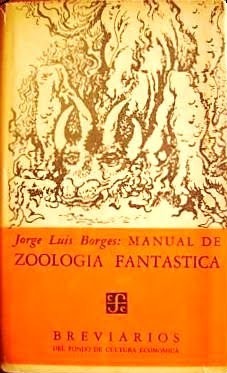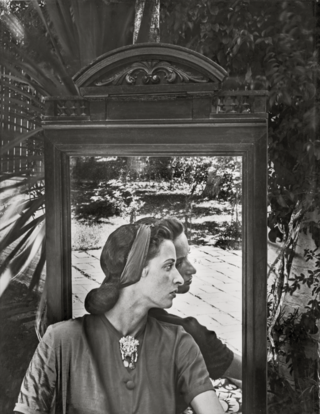Related Research Articles

Jorge Francisco Isidoro Luis Borges Acevedo was an Argentine short-story writer, essayist, poet and translator regarded as a key figure in Spanish-language and international literature. His best-known works, Ficciones (transl. Fictions) and El Aleph, published in the 1940s, are collections of short stories exploring motifs such as dreams, labyrinths, chance, infinity, archives, mirrors, fictional writers and mythology. Borges's works have contributed to philosophical literature and the fantasy genre, and have had a major influence on the magic realist movement in 20th century Latin American literature.
"Tlön, Uqbar, Orbis Tertius" is a short story by the 20th-century Argentine writer Jorge Luis Borges. The story was first published in the Argentinian journal Sur, May 1940. The "postscript" dated 1947 is intended to be anachronistic, set seven years in the future. The first English-language translation of the story was published in 1961.

Bahamut, or Bahamoot, according to Zakariya al-Qazwini, is a monster that lies deep below, underpinning the support structure that holds up the earth.
"Pierre Menard, Author of the Quixote" is a short story by Argentine writer Jorge Luis Borges.
A fictional book is a text created specifically for a work in an imaginary narrative that is referred to, depicted, or excerpted in a story, book, film, or other fictional work, and which exists only in one or more fictional works. A fictional book may be created to add realism or depth to a larger fictional work. For example, George Orwell's novel Nineteen Eighty-Four has excerpts from a book by Emmanuel Goldstein entitled The Theory and Practice of Oligarchical Collectivism which provides background on concepts explored in the novel.
"The Immortal" is a short story by Argentine writer Jorge Luis Borges, first published in February 1947, and later in the collection El Aleph in 1949. The story tells about a character who mistakenly achieves immortality and then, weary of a long life, struggles to lose it and writes an account of his experiences. The story consists of a quote, an introduction, five chapters, and a postscript. "The Immortal" has been described as "the culmination of Borges' art" by critic Ronald J. Christ.
"The Approach to Al-Mu'tasim" is a fantasy short story written in 1935 by Argentine writer Jorge Luis Borges. In his autobiographical essay, Borges wrote about "The Approach to Al-Mu'tasim", "it now seems to me to foreshadow and even to set the pattern for those tales that were somehow awaiting me, and upon which my reputation as a storyteller was to be based."

Ficciones is a collection of short stories by Argentine writer and poet Jorge Luis Borges, originally written and published in Spanish between 1941 and 1956. Thirteen stories from Ficciones were first published by New Directions in the English-language anthology Labyrinths (1962). In the same year, Grove Press published the entirety of the book in English using the same title as in the original language. "The Approach to Al-Mu'tasim" originally appeared published in A History of Eternity (1936). Ficciones became Borges's most famous book and made him known worldwide.

The Book of Imaginary Beings was written by Jorge Luis Borges with Margarita Guerrero and published in 1957 under the original Spanish title Manual de zoología fantástica. It contains descriptions of mythical beasts from folklore and literature. In 1967 the authors published an expanded edition retitled as El libro de los seres imaginaros. Borges collaborated on the first English translation, which was praised upon its publication in 1969.

This is a bibliography of works by Argentine short-story writer, essayist, poet, and translator Jorge Luis Borges (1899–1986).
Norman Thomas di Giovanni was an American-born editor and translator known for his collaboration with Argentine author Jorge Luis Borges.
Celestial Emporium of Benevolent Knowledge is a fictitious taxonomy of animals described by the writer Jorge Luis Borges in his 1942 essay "The Analytical Language of John Wilkins".
A Bao A Qu is a legendary Malay creature described in Jorge Luis Borges's 1967 Book of Imaginary Beings. Borges claimed to have found it either in an introduction to the Arabian Nights by Richard Francis Burton, or in the book On Malay Witchcraft (1937) by C.C. Iturvuru. The Burton reference was given in the original Spanish, but it was changed to the Iturvuru reference in the English text, possibly to make it sound more exotic, or as a reference to Borges' friend C. C. Iturburu. The writer Antares conjectures that Borges's tale might be inspired by Orang Asli myth, and that "A Bao A Qu" is a slurring of abang aku meaning "my elder brother".
"El Golem" is a poem by Jorge Luis Borges, published in 1959, and later published as part of the 1964 book El otro, el mismo. The poem tells the story of Judah Loew and his creation of the Golem. In the poem, Borges quotes the works of German Jewish philosopher Gershom Scholem and Cratylus by Plato.

In Arab folklore, Nasnas is a monstrous creature. According to Edward Lane, the 19th-century translator of One Thousand and One Nights, a nasnas is "half a human being; having half a head, half a body, one arm, one leg, with which it hops with much agility".
Robert Kay Gordon (1887–1973) was an English scholar of medieval and early modern English literature and administrator at the University of Alberta in Canada.

Jorge Luis Borges and mathematics concerns several modern mathematical concepts found in certain essays and short stories of Argentinian author Jorge Luis Borges (1899–1986), including concepts such as set theory, recursion, chaos theory, and infinite sequences, although Borges' strongest links to mathematics are through Georg Cantor's theory of infinite sets, outlined in "The Doctrine of Cycles". Some of Borges' most popular works such as "The Library of Babel", "The Garden of Forking Paths", "The Aleph", an allusion to Cantor's use of the Hebrew letter aleph to denote cardinality of transfinite sets, and "The Approach to Al-Mu'tasim" illustrate his use of mathematics.

Kuyūthā is the cosmic bull in medieval Islamic cosmography. It is said to carry on its back the angel who shoulders the earth and the rock platform upon which the angel stands. The bull is said to stand on the giant fish or whale, Bahamut.
Anthology of Fantastic Zoology is an orchestral symphony by the American composer Mason Bates. The work was commissioned by the Chicago Symphony Orchestra, for whom Bates was then composer-in-residence. It was premiered June 18, 2015 at Symphony Center in Chicago, with the Chicago Symphony Orchestra performing under conductor Riccardo Muti, to whom the work is dedicated. The piece is based on the eponymous book by Jorge Luis Borges.

Margarita Guerrero was an Argentine dancer and writer. She is known for her collaborations with Jorge Luis Borges, with whom she co-wrote and edited Book of Imaginary Beings and El "Martín Fierro". As his eyesight failed, Borges relied increasingly on collaborators in creating his work, and Guerrero's role in Book of Imaginary Beings in particular is thought to have been that of a researcher and compiler.
References
- ↑ "Saratan". A Book of Creatures. 2015-06-22. Retrieved 2018-05-30.
- 1 2 Borges, Jorge Luis (2015). Book of Imaginary Beings . Translated by 柳瀬尚紀. 河出書房新社. pp. 103–107. ISBN 9784309464084.